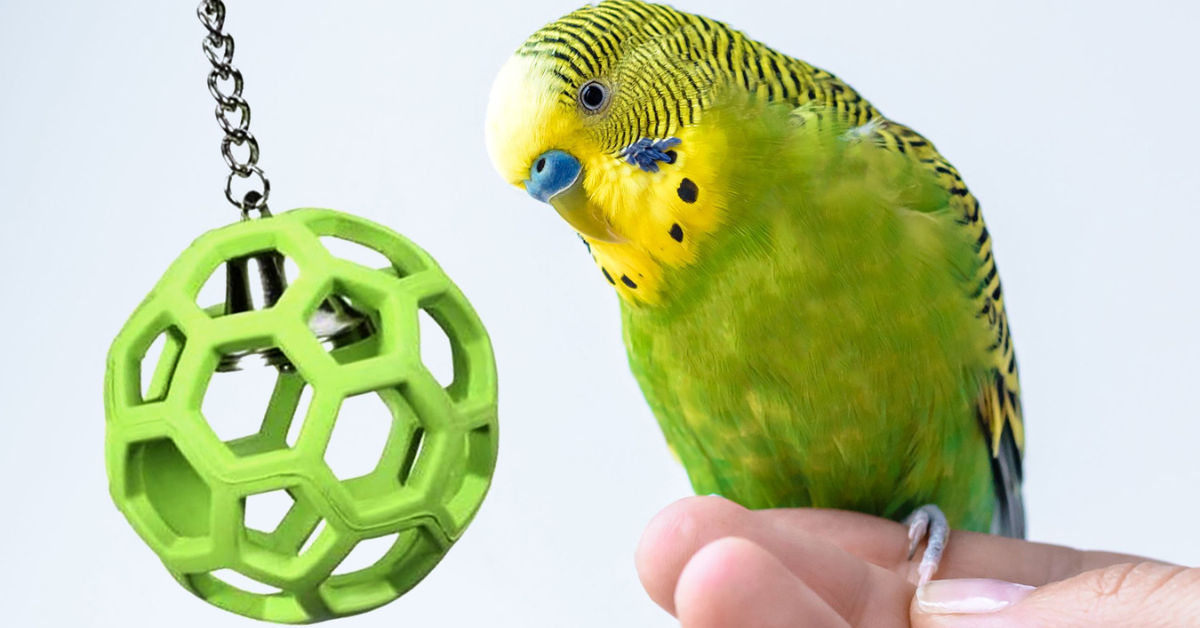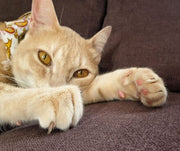The Importance of Toys for Pet Birds

The Importance of Toys for Pet Birds
Toys are essential for the well-being of pet birds. Like cats and dogs, pet birds need stimulation and engagement to stay healthy and happy. Bird toys come in various types, including foraging toys, rope toys, puzzle toys, and preening toys. These toys provide essential exercise, entertainment, and mental challenges for our feathered friends.
In this article, we will explore the importance of toys for pet birds and how they contribute to their overall well-being. Remember, a well-stimulated bird is a happy bird.
Why Bird Toys Are Essential
- Mental Stimulation: Birds are intelligent creatures, and they require mental challenges to stay sharp. In the wild, they spend much time foraging, exploring, and interacting with their environment. For pet birds, toys replicate these activities, offering essential mental stimulation.
- Physical Exercise: Like dogs and cats, birds need physical exercise to stay healthy. Toys encourage birds to move around and use their muscles, which is essential for their physical well-being.
- Preventing Boredom and Behavioral Problems: Boredom can lead to various behavioral problems in pet birds, such as feather picking, aggression, and excessive noise. Providing a variety of toys can help prevent these issues.
- Creating a Fun and Safe Environment: Safety is paramount when choosing toys for your pet bird. Ensure that all toys are made from non-toxic materials and are appropriate for your bird's size and species.
- Encouraging Natural Behaviors: Toys can help replicate birds' natural behaviors in the wild, providing them with a sense of normalcy and well-being.
- Enhancing Social Interaction: Toys can also play a role in social interaction, both with other birds and their human caregivers. Engage with your bird using toys. This not only strengthens your bond but also provides mental and physical stimulation for your pet. Simple games, like playing with a ball or a hanging toy, can be a lot of fun for you and your bird.
Types of Bird Toys
There are many types of bird toys available, each designed to cater to different aspects of a bird’s needs. Understanding the different types of toys can help you select the most appropriate ones for your pet bird.
Interactive Toys
Interactive toys are designed to be played with by both the bird and their owner. These toys can include balls, bells, or even simple games you can play with your bird. Interactive play helps to build a bond between you and your pet and provides an additional layer of stimulation.
Foraging Toys
Foraging toys mimic the natural behavior of searching for food. These toys often hide treats or food, encouraging birds to use problem-solving skills to access the reward. Foraging toys can be simple, like a small box with holes, or more complex, involving multiple steps to reach the food. Birds love the challenge these toys provide and can keep your bird occupied for hours.
Mirror Toys
Mirror toys can be a source of fascination for many birds, as they often mistake their reflection for another bird. This can be particularly beneficial for solo pet birds, providing them a sense of companionship. However, monitoring your bird’s reaction to mirror toys is important, as some may become obsessed or aggressive towards their reflection.
Rope Toys
Rope toys are versatile and can be used for climbing, swinging, and chewing. They can be hung in the cage to provide different forms of exercise and entertainment. When selecting rope toys, ensure they are made of safe materials that won’t fray easily, as frayed ropes can pose a risk to your bird.
Chewable Toys
Chewing is a natural behavior for birds, especially for species like parrots and macaws. Chewable toys made from materials like softwood or coconut shells are perfect for this purpose. They help keep the beak in good condition and prevent overgrowth. Always choose toys made from non-toxic materials to ensure your bird’s safety.
Solo Play Toys
Solo play toys are designed for birds to play with on their own. These can include hanging toys, balls with bells inside, or toys that make noise when moved. Solo play toys are essential for keeping your bird entertained, especially when you’re not around.
Preening Toys
Preening toys can help birds who might over-preen their feathers out of boredom. These toys often feature strands or fibers that birds can preen, providing a healthy outlet for this natural behavior. They can be especially beneficial for smaller birds like budgies, who enjoy the tactile sensation of preening.
Choosing the Right Toys
Selecting the right toys for your bird involves understanding their specific needs and preferences. Different bird species have different behaviors and physical abilities, so choosing toys that cater to your bird’s natural instincts is important.
Size and Safety
Always choose toys that are appropriate for the size of your bird. Smaller birds, like budgies, need smaller, lightweight toys, while larger birds, like macaws, require more robust toys that can withstand their powerful beaks. Safety is paramount; ensure that toys do not have small parts that can be swallowed or materials that can fray and pose a risk.
Variety and Rotation
Birds, like humans, can get bored with the same toys. Providing a variety of toys and rotating them regularly can keep your bird engaged and prevent boredom. Introduce new toys gradually, as some birds may fear new objects in their environment.
Natural Materials
Toys made from natural materials like wood, coconut shells, and safe trees are often the best choice. These materials are safe for birds to chew on and can mimic the textures they would encounter in the wild. Avoid toys made from toxic materials, as birds often chew and pull at them.
Benefits of Toys for Pet Birds
The benefits of providing toys for pet birds extend beyond simple entertainment. Here are some of the key advantages:
- Toys encourage birds to move, climb, and explore, which provides much-needed physical exercise. Birds with ample exercise opportunities are less likely to develop obesity and other health problems.
- Toys that challenge a bird’s mind, like foraging and puzzle toys, help to keep their cognitive functions sharp. Mental stimulation is crucial for preventing boredom and associated behavioral issues.
- Chewable toys and those designed for climbing help to maintain the health of a bird’s beak and claws. Regular chewing helps to prevent overgrowth and keeps the beak in good condition.
- Toys provide a healthy outlet for natural behaviors like chewing, preening, and foraging. This can reduce stress and prevent the development of harmful behaviors such as feather picking.
- Interactive toys provide opportunities for bonding between you and your bird. Playing together can strengthen your relationship and provide mutual enjoyment.
Addressing Specific Needs of Bird Species
Different bird species have different needs and preferences when it comes to toys. Understanding your bird's species can help you choose the most suitable toys.
Parrots and macaws are known for their strong beaks and need for robust toys. Choose sturdy, chewable toys made from hardwood and thick ropes. Puzzle toys that challenge their intelligence are also ideal for these birds.
Smaller birds, like budgies, need smaller toys that they can easily manipulate. Preening toys, small bells, and lightweight foraging toys are perfect for them. Ensure that toys are appropriately sized to prevent any risk of injury.
Ensuring a Happy and Healthy Life for Your Pet Bird
The importance of toys for pet birds cannot be overstated. Toys are essential for physical health, mental stimulation, and overall well-being. From foraging toys to rope toys and from puzzle toys to preening toys, there is a wide variety of options to keep your feathered friend happy and engaged. Always choose toys carefully, considering the safety and preferences of your pet bird.
For premium pet supplies, including a range of bird toys, visit Petmate today. Providing the best for your pet ensures your feathered friend a healthy, happy, and enriched life.
Previous article

Next article

Related posts
View all-

What Is the Most Wanted Dog Accessory?
Every dog owner wants their furry friend to have the best. The options for dog accessories are endless, from comfortable collars to cozy beds. But what is the most wanted item for dogs?
Read Article -

What is the Best Scent to Mask Cat Box Odors?
If you share your home with a cat, you know how important it is to keep their litter box fresh and odor-free. A clean litter box improves your home’s air quality and ensures your furry friend feels comfortable using it. However, masking litter box odors can be tricky, especially if you have more than one cat or the smell of cat urine seems impossible to control.
Read Article -

How To Celebrate National Puppy Day
Let's face it. Puppies are absolutely one of the cutest creatures on this planet. From their fresh puppy breath to their adoring puppy eyes to their loving puppy cuddles, puppies have been capturing the hearts of millions for generations. Read Article






